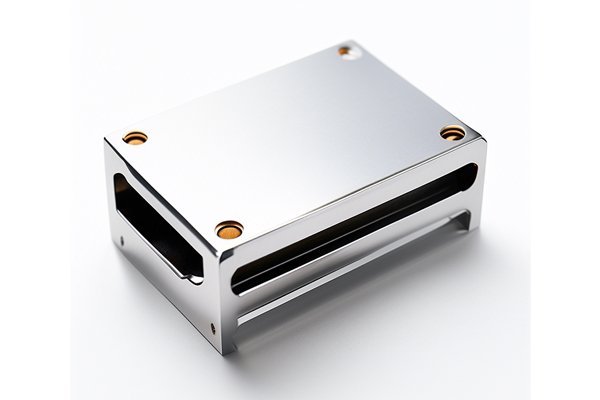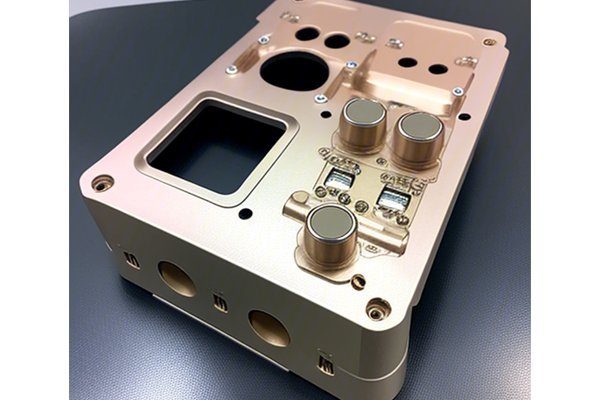Did you know that the CNC machining industry is projected to reach a staggering $117 billion by 2025? This rapid growth underscores the increasing reliance on precision engineering in manufacturing. For businesses aiming to create high-quality parts with impeccable finishes, CNC (Computer Numerical Control) machining technology is not merely an option; it’s a necessity.
to CNC Machining
CNC machining is a manufacturing process that utilizes computer-controlled tools to create precise and accurate parts. Whether it’s high-end automotive components, intricate medical devices, or complex aerospace structures, the ability to produce flawless finishes is critical to quality assurance and overall functionality. But how can modern CNC machining technology truly elevate the finish of produced parts? This blog will explore the various techniques, tools, and innovations in CNC machining that can help businesses achieve that perfect finish.
Chapter 1: Understanding the CNC Machining Process
Before diving into techniques for achieving high-quality finishes, it’s essential to grasp the CNC machining process.
1.1 The CNC Machining Workflow
The CNC machining process typically involves several key stages:
1.2 Types of CNC Machining Techniques
There are several CNC machining techniques that affect the final part finish, including:
Each of these techniques has unique advantages and will affect the finish of the part differently.
Chapter 2: Factors Affecting Surface Finish in CNC Machining
Achieving a flawless surface finish is influenced by various factors, including but not limited to:
2.1 Material Selection
Different materials respond uniquely to machining processes. For instance, metals like aluminum and steel behave differently compared to non-metals like plastics. Selecting the right material is the first step toward a high-quality finish.
2.2 Tool Geometry
The geometry of the cutting tools directly affects surface finish. Sharper tools tend to produce finer finishes, while blunt tools can cause roughness and deformity.
2.3 Cutting Speed and Feed Rate
The speed at which the tool moves through the material (cutting speed) and how fast it advances (feed rate) significantly impact surface finish. Proper optimization of these parameters is crucial for achieving quality results.
2.4 Coolants and Lubricants
Using the right type of coolant or lubricant can improve the finish by reducing heat and friction during machining. This not only preserves tool life but also minimizes surface imperfections.
Chapter 3: Advanced Techniques for Achieving Flawless Finishes
Numerous advanced CNC techniques and tools can significantly enhance surface finish. Below are some highly effective methods:
3.1 High-Speed Machining (HSM)
High-speed machining employs higher cutting speeds and feeds to minimize cutting forces and reduce thermal distortion. It allows for smoother surface finishes and greater material removal rates.

3.2 Precision Tool Path Strategies
Tool path strategies play an important role in the final surface quality. Utilizing strategies like adaptive clearing, zig-zag patterns, and constant tool engagement can lead to improved surface finishes.
3.3 Incorporating Tool Coatings
Tool coatings such as TiN (Titanium Nitride) and TiAlN (Titanium Aluminum Nitride) can enhance tool hardness and reduce friction. This results in cleaner cuts and, therefore, smoother surfaces.
3.4 Post-Processing Techniques
After the initial machining, utilizing post-processing techniques such as polishing, sanding, or grinding can bring about an even higher level of finish. Techniques such as vibratory finishing and tumbling can further enhance aesthetics.
Chapter 4: Innovations in CNC Machining for Surface Finish
The rapid advancement of CNC technology provides myriad opportunities for achieving improved surface finishes. Below are some of the most notable innovations:
4.1 Automation
Automated CNC systems equipped with real-time monitoring can adapt machining parameters on-the-fly. This smart adaptation can help maintain consistent surface quality throughout production runs.
4.2 Multi-Axis Machining
Multi-axis CNC machines offer greater flexibility and complexity in creating parts. The ability to access multiple angles means that intricate details can be machined without the need for repositioning, thus reducing potential errors.
4.3 Hybrid Manufacturing
Combining additive and subtractive manufacturing techniques can yield high precision while allowing for greater design freedom. This fusion can help in achieving unique finishes that traditional methods may struggle with.
Chapter 5: Quality Control and Assurance Measures
Even with advanced techniques, maintaining a high-quality surface finish requires rigorous quality control.
5.1 Inspection Tools
Employing tools such as surface profilometers ensures precision in measuring surface roughness. Regular inspections should be part of the production routine.
5.2 Tolerance and Standards
Establishing precise tolerances and adhering to industry standards during the CNC machining process ensures that the final products meet the required quality benchmarks.
5.3 Continuous Improvement
Engaging in a culture of continuous improvement enables firms to identify areas for refining processes, tools, and techniques further, leading to enhanced quality in production.
Chapter 6: Case Studies and Real-World Applications
Nothing illustrates the effectiveness of CNC machining technology quite like real-world applications. Below are some case studies that demonstrate how companies have achieved flawless finishes through CNC techniques.
6.1 Aerospace Component Production
A leading aerospace manufacturer adopted high-speed machining for producing turbine components. By optimizing tool paths and investing in advanced tooling, they reduced roughness from 3.2 to 0.4 μm, significantly elevating their product quality.
6.2 Medical Devices Manufacturing
A medical device firm specializing in surgical instruments implemented automated CNC systems that not only expedited production but ensured consistent surface quality, leading to higher patient safety and device efficacy.
: Embracing CNC Machining for Quality Production
Achieving a flawless finish in high-quality parts production through CNC machining involves an intricate interplay of material selection, cutting parameters, tool choices, and technological innovations. By embracing advanced techniques and continually refining processes, manufacturers can produce parts that not only meet but exceed industry standards.
In an era where precision is paramount across sectors, your ability to maintain a high-quality finish could be the key differentiator in a competitive marketplace. Companies that take the time to understand the nuances of CNC machining and invest in the right technology will be well-placed to thrive in the future.
Why is this blog important? Because it provides insights into the art and science of CNC machining that can help businesses make informed decisions, reduce costs, and increase customer satisfaction. It’s time to embrace the possibilities that CNC machining technology offers and set your operations on the path to success.






